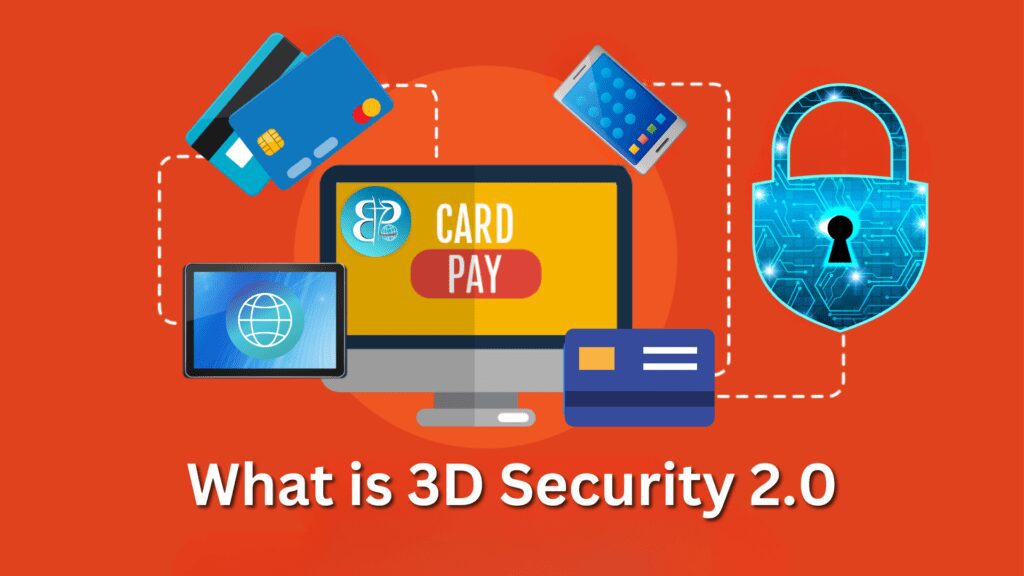
Best and Secure 3D-security 2.0
Best and Secure 3D-security 2.0 Every buyer’s life has been made more accessible by online card payments, which also enable businesses to boost earnings thanks to the ease of price and quick transaction times. But as convenience has increased, so has the number of fraudulent transactions. Visa developed the 3D-Secure 1 protocol in 1999 to assist businesses in rapidly and easily authenticating customers.
Best and Secure 3D-security 2.0 It became clear that something new and more sophisticated was required to protect merchants because fraudsters haven’t been sitting around since then and have developed various strategies to engage in unlawful activities. Just that was the new 3D-Secure 2.0 protocol. To stop fraud, it examines 100 pieces of data, including sensitive information about the cardholder, the location, prior transactions, the Mac address, the device information, and the device ID.
Best and Secure 3D-security 2.0 After reviewing all of this information, the 3D-Secure service provider determines the level of danger. If the risk is considered high, the cardholder must also confirm his or her identity using biometrics or two-factor authentication. The buyer is free to stop at that point if the transaction is determined to be high-risk. The issuer will deliver the seller’s authentication results.
What changes have been made between 3D-Secure 2.0 and the original?
- Best and Secure 3D-security 2.0 The maximum convenience of the authentication process is the primary distinction between the new and old versions of the protocol. Numerous users also point out that the user interface has been enhanced, and this is readily apparent on a variety of devices. As we previously stated, merchants are now able to provide a lot more data to their issuing bank for verification via 3D-Secure 2.0 than they could before.
- Best and Secure 3D-security 2.0 The use of dynamic authentication using unique tokenization-based techniques and the usage of biometric information will be the next update. Cardholders are no longer required to manually enter their passwords. As a result, the transactions themselves proceed more quickly and with less risk.
- Best and Secure 3D-security 2.0The protocol now has the capacity to detect mild deviations, which was not possible in earlier versions. As a result, the updated version of the protocol now allows the issuer to pre-authenticate when receiving a transaction authorization request. As a result, there is a very low chance that the client will cancel the transaction or the issuer would reject it.
- Best and Secure 3D-security 2.0 Additionally, 3D-Secure 2.0 have features that let you set up transactions that the vendor initiates. This functionality will be helpful to the merchant first and foremost when he needs to make changes to take regular payments from clients. Only the initial payment will require SCA; all subsequent payments can be made without it. The first payment is authenticated by the merchant thanks to 3D-Secure 2.0, and all subsequent payments are subsequently set up as transactions that are initiated by him.
- Best and Secure 3D-security 2.0 It’s important to keep in mind that 3D-Secure 2.1 and 2.2 differ from one another. The primary distinction between these two versions of the protocols is support for exceptions. Version 2.2 also offers the choice to support both delegated and unbound authentication. Non-associated authentication is a category of authentication that the issuers will accept from a third party. Non-associated authentication is defined as authentication that takes place utilizing techniques not included in the main authentication stream. Even if the cardholder is not online, it can be done. To enable authorization on a computer or other device, for instance, such authentication is carried out using a Smartphone.
Therefore, it is safe to claim that 3D-Secure 2.0 represent a significant advance in the direction of greater security and rigorous user verification.
Here are some key improvements and features of 3D-Secure 2.0:
- Improved User Experience: In comparison to 3DS1, 3DS2 strives to offer a more frictionless and smooth user experience. It supports a broad variety of authentication techniques, including one-time passcodes delivered via SMS or email and biometric authentication (such as fingerprint or facial recognition). This keeps security intact while enabling users to verify themselves in a method that is convenient for them.
- Risk-Based Authentication: The concept of risk-based authentication is introduced in 3DS2, where the level of authentication necessary is decided upon by the transaction’s risk considerations. High-risk transactions would require stronger authentication measures while low-risk transactions could merely necessitate minimum authentication.
- Data Sharing: With the new protocol, the issuer (bank), the card network, and the merchant can now share additional information. By enhancing the data, it is possible to detect fraud more accurately, reduce false positives, and create more accurate risk evaluations.
- Support for Mobile Devices: The 3D-Secure protocol’s initial architecture was primarily focused on desktop transactions. Given the trend toward mobile shopping and payments, 3DS2 is built to function flawlessly on both desktop and mobile platforms.
- Strong Customer Authentication (SCA) Regulations compliance: The Strong Customer Authentication (SCA) criteria were implemented in the European Union by the Revised Payment Services Directive (PSD2). In comparison to the original 3D-Secure, 3DS2 is made to satisfy these requirements while offering a more user-friendly experience.